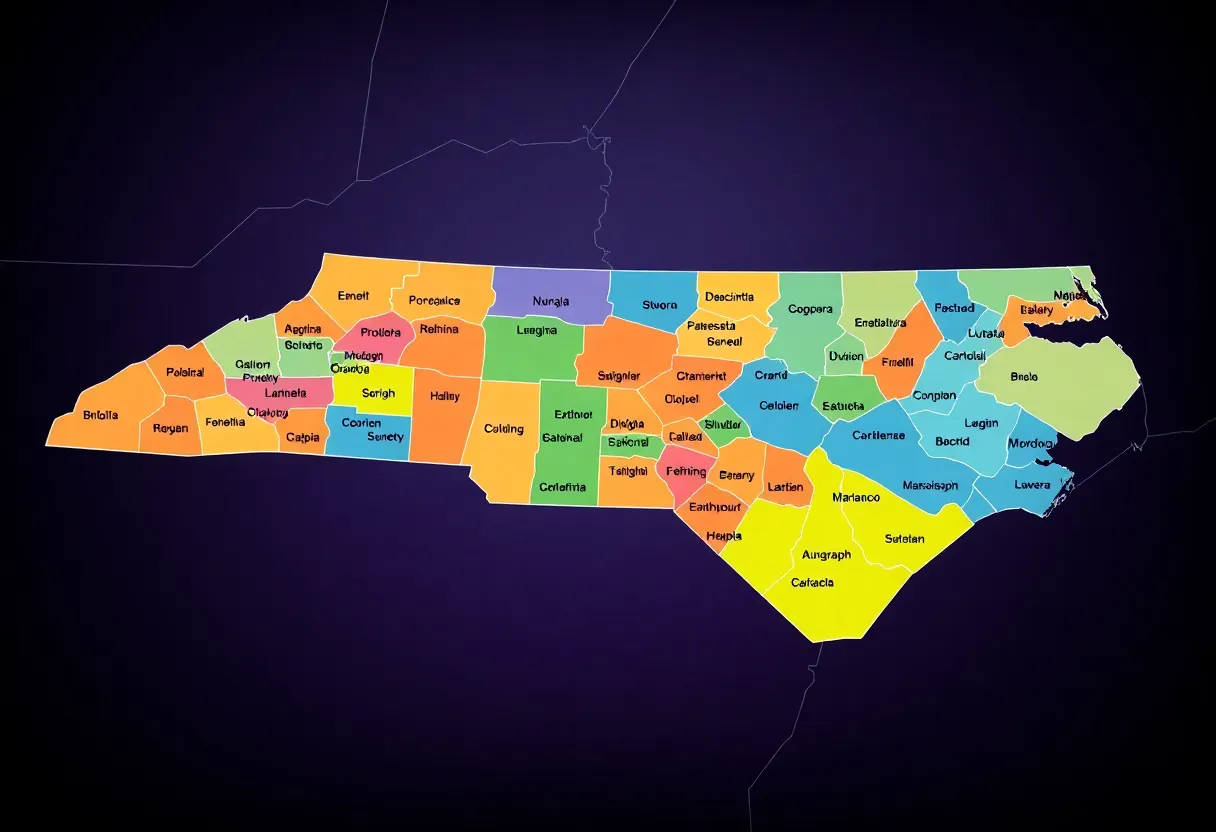North Carolina, October 17, 2025
A proposed congressional map in North Carolina aims to significantly reshape the 1st and 3rd districts. These changes may alter the balance of political representation within the state and could have a substantial impact on upcoming elections. Legislators are assessing how the new map may influence voter demographics and party representation, igniting discussions about the implications for both local and national politics.
Raleigh, North Carolina – In a significant move, Republican legislators have proposed a new U.S. House district map that notably reshapes the 1st and 3rd congressional districts. This redistricting aims to bolster Republican representation and could have a substantial impact on the state’s political landscape in the upcoming elections.
Proposed Changes to the 1st and 3rd Districts
The proposed map introduces several key modifications:
- 1st District: The redrawn boundaries would shift several inland counties, including Greene County, into the neighboring 3rd District. This adjustment is expected to make the 1st District more favorable to Republican candidates.
- 3rd District: The inclusion of Greene County and other inland areas is anticipated to alter the demographic and political composition of the 3rd District, potentially influencing its electoral outcomes.
Implications for Political Representation
These changes are poised to affect the balance of power in North Carolina’s congressional delegation:
- Republican Advantage: If the redistricting plan is approved, Republicans could increase their representation from 10 to 11 seats out of North Carolina’s 14 U.S. House seats, enhancing their influence in the state’s federal representation.
- Impact on Incumbents: Democratic Representative Don Davis, who currently holds the 1st District seat, may face a more challenging reelection campaign due to the altered district boundaries.
Context and Background
Redistricting, the process of redrawing electoral district boundaries, occurs every ten years following the U.S. Census to reflect population changes. In North Carolina, the General Assembly is responsible for this task. The proposed redistricting aligns with a broader national trend where Republican-led legislatures are revising district maps to gain electoral advantages ahead of the 2026 midterm elections. Similar efforts are underway in other states, including Texas and Missouri, as both parties vie for control of the U.S. House of Representatives.
Critics of the proposed redistricting argue that it constitutes partisan gerrymandering, potentially diluting the voting power of certain communities. Concerns have been raised about the impact on minority representation, particularly regarding the Black community, as Representative Davis is one of North Carolina’s three Black representatives. Legal challenges may arise depending on the final boundaries and their effects on voting strength.
The North Carolina General Assembly is scheduled to reconvene to debate and vote on the proposed redistricting plan. The outcome of this process will significantly influence the state’s political dynamics in the forthcoming elections.
Frequently Asked Questions (FAQ)
What is redistricting?
Redistricting is the process of redrawing electoral district boundaries to reflect population changes, ensuring equal representation in legislative bodies.
How does the proposed redistricting affect North Carolina’s congressional districts?
The proposed redistricting plan significantly reshapes the 1st and 3rd congressional districts, aiming to make the 1st District more favorable to Republican candidates by shifting several inland counties, including Greene County, into the neighboring 3rd District.
What are the potential implications of these changes?
If approved, the redistricting could increase the Republican representation in North Carolina’s congressional delegation from 10 to 11 seats out of 14, potentially impacting the reelection prospects of Democratic Representative Don Davis in the 1st District.
Why is this redistricting occurring now?
The redistricting aligns with a broader national trend where Republican-led legislatures are revising district maps to gain electoral advantages ahead of the 2026 midterm elections, following President Donald Trump’s call for such actions.
What concerns have been raised about the proposed redistricting?
Critics argue that the redistricting constitutes partisan gerrymandering, potentially diluting the voting power of certain communities, particularly minority groups. Legal challenges may arise depending on the final boundaries and their effects on voting strength.
Key Features of the Proposed Redistricting
| Feature | Description |
|---|---|
| 1st District Redesign | Shifts several inland counties, including Greene County, into the neighboring 3rd District, aiming to make the 1st District more favorable to Republican candidates. |
| 3rd District Adjustment | Incorporates Greene County and other inland areas, altering the district’s demographic and political composition. |
| Republican Representation Increase | If approved, Republicans could increase their representation from 10 to 11 seats out of North Carolina’s 14 U.S. House seats. |
| Impact on Incumbents | Democratic Representative Don Davis may face a more challenging reelection campaign due to the altered district boundaries. |
| National Redistricting Trend | Aligns with a broader national trend where Republican-led legislatures are revising district maps to gain electoral advantages ahead of the 2026 midterm elections. |
Deeper Dive: News & Info About This Topic
HERE Resources
North Carolina House Establishes Redistricting Panel
North Carolina State Fair Opens with Infrastructure Upgrades
New Congressional Map in North Carolina Could Shift Political Landscape
North Carolina to Debate Congressional Map Redistricting
Author: Construction NC News
The NORTH CAROLINA STAFF WRITER represents the experienced team at constructionncnews.com, your go-to source for actionable local news and information in North Carolina and beyond. Specializing in "news you can use," we cover essential topics like product reviews for personal and business needs, local business directories, politics, real estate trends, neighborhood insights, and state news affecting the area—with deep expertise drawn from years of dedicated reporting and strong community input, including local press releases and business updates. We deliver top reporting on high-value events such as the North Carolina Build Expo, major infrastructure projects, and advancements in construction technology showcases. Our coverage extends to key organizations like the Associated Builders and Contractors of the Carolinas and the North Carolina Home Builders Association, plus leading businesses in construction and legal services that power the local economy such as CMiC Global and Womble Bond Dickinson LLP. As part of the broader network, including constructioncanews.com, constructionnynews.com, and constructiontxnews.com, we provide comprehensive, credible insights into the dynamic construction landscape across multiple states.





